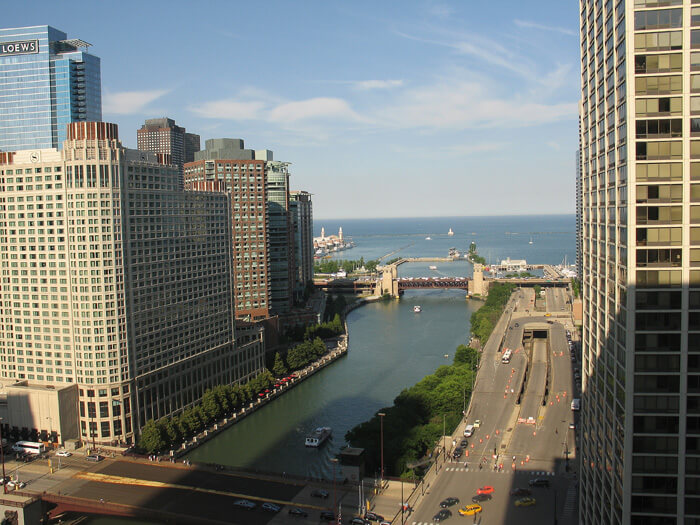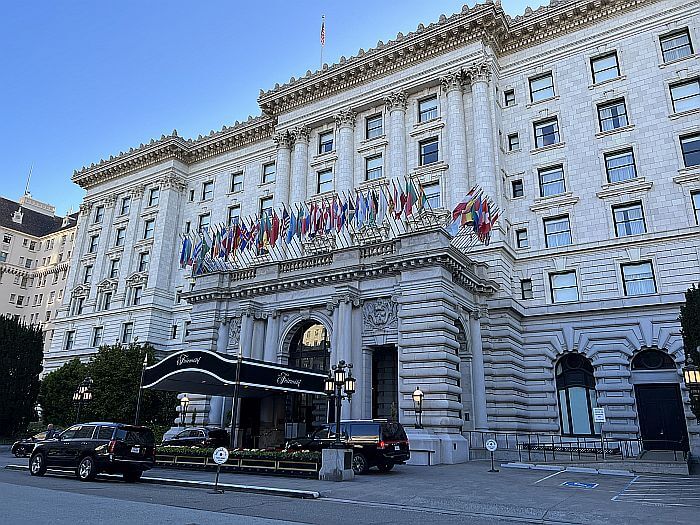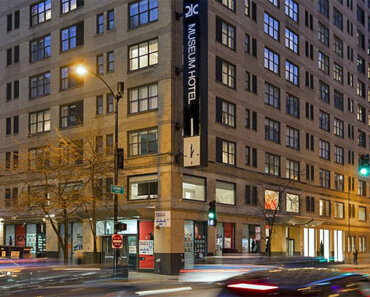You’ve found reasonable flights, you’ve asked for time off work, you’ve got your schedule lined up with your friends or spouse, and you’re ready for that fun vacation in a big city. It’s all going great in the planning until you start pulling up hotel prices and then…yikes! It’s $325 per night for a Courtyard Marriott? Really?
Hotels have been doing very well since travel roared back from the pandemic years and the “revenue optimization” accountants have been busy raising rates and adding on junk fees. It has gotten much more difficult to find cheaper hotels in major cities in the USA and Canada. So you have to expand your horizons and take advantage of other options. That starts by expanding your map beyond the urban core.

If you look at what you’re actually doing on vacation, you probably don’t need to be in the center of the action all the time. You can easily take advantage of those epic NYC birthday gift ideas for your significant other without being based next door to where the sunset river cruise starts or where the skyline helicopter tour takes off. You can get to the prime attractions in San Francisco, Boston, or Washington DC without staying right next to them.
This is easier to pull off in Europe than in the USA, I’ll admit, since America tends to invest far more in roads and giant highways than it does in efficient infrastructure and public transportation. Fortunately, some of the biggest cities do have ways to get around without a car and in the ones that don’t, adding on a rental car and parking can still put you in better shape because the rates further out are so much lower. (And then you can take excursions outside of the city as well.) Or you can pull up Uber or Lyft and do the math on that option, no parking required.
Here are some examples to get you thinking in some of the largest cities in the USA, ones that have a subway or train system that can get you around at a low cost. If you apply this advice to Europe or you figure out the bus system elsewhere, you’ll do even better.
Cheaper Hotels in New York City

Courtesy of W Hotels
Since I already mentioned New York City, I’m starting there. It’s the iconic place people have seen a hundred times in movies and TV shows so visitors want to see it all and do it all when they visit. Unfortunately, staying in the heart of the action in Manhattan is really going to cost you. You can easily pay $350 or more per night for a small room that barely holds you and your luggage, especially in peak season times. The average rate there for a hotel 3 stars or above was $288 last year and is projected to rise 6.8 percent this year according to a American Express Global Monitor report.
Something interesting happened last year though when New York City effectively banned Airbnb rentals as we know them: New Jersey saw a massive spike in apartment rental customers. Pushed out of New York, visitors crossed the river and stayed in Hoboken or Jersey City instead, taking the PATH train, a ferry, or a bus to go across the Hudson.
You can do the same with your hotel and you have even more choices. Besides those close-by cities in New Jersey, you can cross the other river to Brooklyn and Queens and join hundreds of thousands of New Yorkers who ride the subway into Manhattan when they want, many commuting that route daily. How much will this save you? Here are some examples that are in roughly the same brand class:
Hilton Garden Inn Midtown West $372 – Hyatt House Jersey City $259
Hotel Indigo NYC Downtown $342 – Hyatt Place Long Island City $270
Fairfield Inn & Suites Penn Station $376 – Home2 Suites Long Island City $270
Hotel Deals in Chicago
Another popular city with high hotel prices, Chicago is also blessed with a good public transportation system. The elevated metro system, the L, will get you from the Magnificent Mile museums and other attractions out to less expensive hotels in the nearby suburbs and smaller cities of Chicago Southland. That area stretching from Midway Airport to the southeast is host to more than 65 hotels. Some require a ride from the closest station, but that’s easily offset by the rate difference.
Or you can rent a car. If you stay in this region and have your own vehicle, you have access to offerings that are a contrast to what you get in the city center, especially nice if you’re be spending more than a couple of nights. You can enjoy golf courses, large forested parks, bike trails, and restaurants where you can sit outside and have a view of something besides cars and people. You’ll also have access to more free festivals and events in the warm months because they have more space to host them.
How much will that save you? Here are some cheaper hotels around Chicago to compare to ones in the city center. Side note: the first thing that popped up in Booking.com when I searched a date in August was the Chicago Getaway Hostel, priced at $97 for 2 dorm beds. A hostel!
Doubletree by Hilton Magnificent Mile $343 – Doubletree by Hilton Alsip $193
Chicago Marriott Downtown $505 – Chicago Marriott Midway $224
Holiday Inn Express Magnificent Mile $241 – Holiday Inn Express Oak Forest $97
Finding Cheaper Hotels in San Francisco
Three times I’ve been to San Francisco on someone else’s dime and stayed at grand hotels like the Fairmont San Francisco pictured above ($438 on the dates searched in the examples below) and once I got to stay at the cool Hotel Zeppelin. If I were headed there on vacation though and it was a busy time. I’m come in and see the sights, ride the trolley around, then head out to cheaper pastures for sleeping.
Besides that cool trolley system in the center, the Bay Area has an extensive public transportation system called BART. It goes so far that people in San Francisco take it out to the airport in Oakland. You can do the same with your hotel choices, using the train system to get back in the evenings after you’ve done your tourist things during the day.
San Francisco is an oddball on this list though: prices have actually gone down there in the past five years, not up. There are a lot of negative reasons for this in the local economy, from empty office towers to housing problems, so sometimes you see prime location hotels for less than $100. Shop around.
When there’s a convention or holiday weekend though, the differences can be more dramatic. Here are a couple of examples:
Courtyard Marriott Fisherman’s Wharf $237 – Courtyard Downtown Oakland $99
Canopy by Hilton San Francisco $373 – AC Hotel by Marriott Oakland $156
Alternative Hotels in the Boston Area
While I think of Boston as a college town and financial center, there must be quite a few tourists landing there every week as well because a report from CheapHotels.org listed Boston as the #1 most expensive hotel market in the USA last year, the only one topping $300 per night as the average rate. You’ll often see top properties starting at $600 for a standard room.
Ouch! I pity the poor parents just trying to come visit their son or daughter on homecoming weekend because rates are probably even higher then. I’m guessing they take a nosedive in the winter, but for the average to be that high, they must make up for it at other times.
Boston does have a good metro system, however, called “The T,” so you do have plenty of options if you use that to expand your hotel map. For guidance, take a look at their route map and notice all the other little towns and suburbs that are on it.

You won’t be hurting for choices: Marriott alone has 134 properties in the metro area. Here are a few price comparisons to give you an idea for budgeting:
Marriott Courtyard Copley Square $458 – Marriott Courtyard South Boston $203
Canopy by Hilton Boston Downtown $486 – CitizenM Boston North Station $205
Boston actually has a lot of “centers” that are near T stations depending on whether you’re trying to be near Harvard/Cambridge, Boston College, the financial district, Back Bay, or some other certain spot. If you’re not picky, pull up the subway map and start searching.
Cheaper Washington, D.C. Hotel Locations

Sonesta Select in Greenbelt, MD
Driving around Washington, D.C. can be a nightmare, but getting around the nation’s capital by metro and by foot is a dream. You can travel around the city and its two bordering states of Virginia and Maryland with a metro card, so you have a long list of options for places to spend the night, even if you’re going to spend three full days exploring the Smithsonian and seeing the various government buildings.
A ride on the DC metro will usually cost you six bucks or so unless you’re going more than 12 stops (it’s priced by zone) and there are passes that will save you a few dollars if you’re using it frequently. The surrounding towns you’ll get to are no slouches either when it comes to food and drink. After all, most of the people working in government or for the many tech companies around don’t live in the center of DC themselves. They are in places like Alexandria, Arlington, Silver Spring, or Bethesda.
I loved staying right behind the White House at the Willard Intercontinental in DC, but I was paying with IHG points when I stayed there. I probably wouldn’t cough up the nighty rate of $706 for a standard if going to the city on vacation. Keep in mind that hotel prices in D.C. are highly correlated to when Congress is in session. If they’re on break, so are all the lobbyists and staffers and those coming to meet with them. If they’re all out of town, you’ll have a much easier time getting a deal.
Here are some comparisons to look at to get an idea of how much you would save in peak periods:
Holiday Inn Express DC Downtown $290 – Holiday Inn Express Silver Spring $153
Four Seasons Washington DC $1,733 – Ritz-Carlton Pentagon City $652
Hyatt House Washington DC $414 – Springhill Suites Alexandria $231
How about you? Where have you found cheaper hotels in major cities by expanding your search beyond the center? Leave it in the comments!






I try to look up the metro lines route before booking and have used this strategy in Europe a lot too. In cities like Athens and Prague, you can save a fortune by getting out of the city center where all the tourists are huddled. Plus the restaurants end up being cheaper too when you get into more local areas.